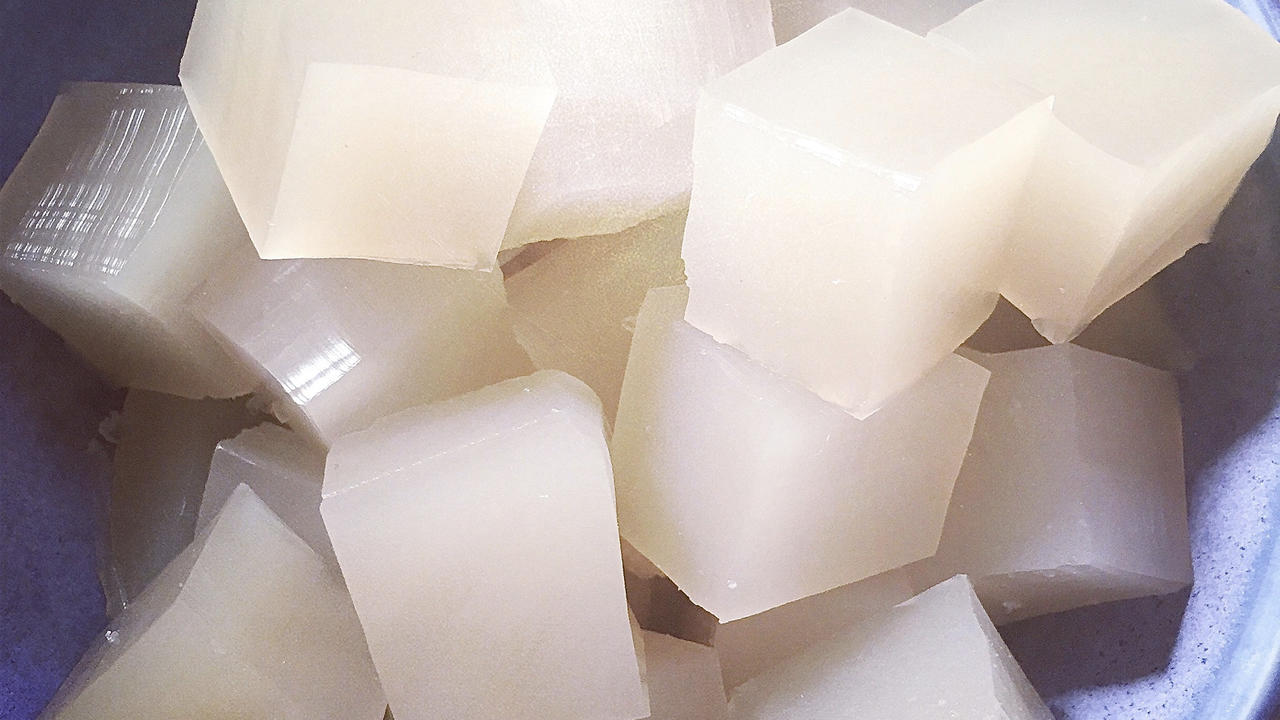Homemade Gelatin: a neutral-flavoured version for desserts!

Gelatin is somewhat of a superfood, having its heyday again after years of misguided vilification. It is the cooked form of animal collagen, which contains an unusually high amount of the amino acids, glycine and proline. Aside from getting a small supply whenever you eat gelatinous meaty dishes, there are three other ways to boost your intake. By consuming bone broth; using the storebought powdered or sheet form; or preparing your own homemade gelatin.
Benefits of gelatin – why we all need it
Gelatin’s health benefits are extensive. It is wonderful for the gut and digestion in general. And it’s also well known for assisting with joint health and arthritis pain, largely due to its chondroitin content. The impressive amounts of glycine make it a wonderfully calming food for people suffering with anxiety, stress or restless sleep. (Especially children!)
Sourcing vs. making gelatin
Gelatin is naturally found in the skin and cartilage of animals. It readily dissolves in boiling water and forms a gel as it cools. As a gelling agent, it is used by food manufacturers, pharmaceutical and cosmetics companies.
Boiling up the right types of bones to make homemade bone broth or fish stock is one way to source natural gelatin for our bodies. However, if you’re wanting to make marshmallows or jellies, a big slosh of beef broth can be hard to camouflage!
Alternatively, you can readily buy gelatin in the form of sheets, granules and powder. Unfortunately, most store-bought varieties, are sourced from factory-farmed pigs. This study demonstrated the nutritional superiority of gelatin from chicken feet and found that it contained twice the amount of collagen than commercial gelatin. Having said that, there are some great brands of quality gelatin from grass-fed animals now on the market. When homemade gelatin isn’t an option, I love this one (not an affiliate – just a fan). You can find the Australian distributor here.
Enter option three: homemade gelatin
You’ll get all of the potent benefits of gelatin that is easy to digest, without a strong flavour, making it perfect for desserts and sweet treats. Making it from scratch means you can also control the ingredients you use.
I found this Brazilian study that tested the ‘likeableness’ of flavoured jellies produced from chicken feet, interesting. The objective was to utilise what would otherwise become industrial waste from chicken processing plants. The jellies rated well with tasters!
The best gelatin will come from local, pastured and organic animals. And by making use of the feet, we are helping to support a system that is more focused around nose-to-tail consumption. This means we’re honoring the animal and minimising waste, by using every part. It also allows farmers and butchers alike, to sell the whole animal. A win for all.
How to use neutral-flavoured gelatin
Homemade gelatin is easy to prepare and the end product is very versatile. You simply plop the cubes into virtually any food or drink. It won’t be detected, even by the fussiest of eaters. For those with a sweet tooth, you can add it to smoothies and desserts. (It’s best to add it in its melted form). Or simply include a few cubes during cooking, to just about any soup, stew, bolognese, stir-fry, rice or mashed potato.
Definitely pop a cube or two in your tea. Especially in the evenings, as the high glycine content is beneficial in promoting restful sleep. You can even use melted gelatin as a hair treatment, mixed with honey, apple cider vinegar and water.
People who have issues with histamine may find that they need to stick with small amounts and build up gradually. Although in my experience, this type of gelatin is much more easily tolerated than regular beef broth and gelatin powders.
Ready to try it? Here’s some stunning inspiration. My Strawberry, Vanilla & Fingerlime broth pops recipe!
Ingredients
- 1-2kg of chicken feet or pork trotters (or both)
Instructions
- Place the feet in a large pot of water. Bring to the boil over high heat, then discard the water and rinse the feet well.
- Return the feet to the pot, with enough water to cover and bring to the boil once more. Skim any foam that rises to the top and discard.
- Reduce the heat and simmer gently, covered, for 2-4 hours.
- Towards the end of the cooking period, skim as much of the fat off the surface as you can, using a ladle. You can save this for cooking or discard if you wish.
- Remove the pot from the heat and strain the liquid through a collander into a rectangular dish or tray. Allow to cool somewhat, before transferring to the fridge to set. Slice into cubes for convenient use and store in an airtight container in the fridge (for up to 3 days) or freezer (up to 3 months).


